When Can Geraniums Go Outside in the UK? A Seasonal Guide
When you’re eager to brighten up your garden with geraniums, timing is everything. These beloved plants, also known as pelargoniums, thrive when planted outdoors, but they are sensitive to cold weather. In the UK, geraniums can be safely placed outside after the last frost, usually around late May. This timing ensures that the tender plants are not harmed by unexpected cold snaps.
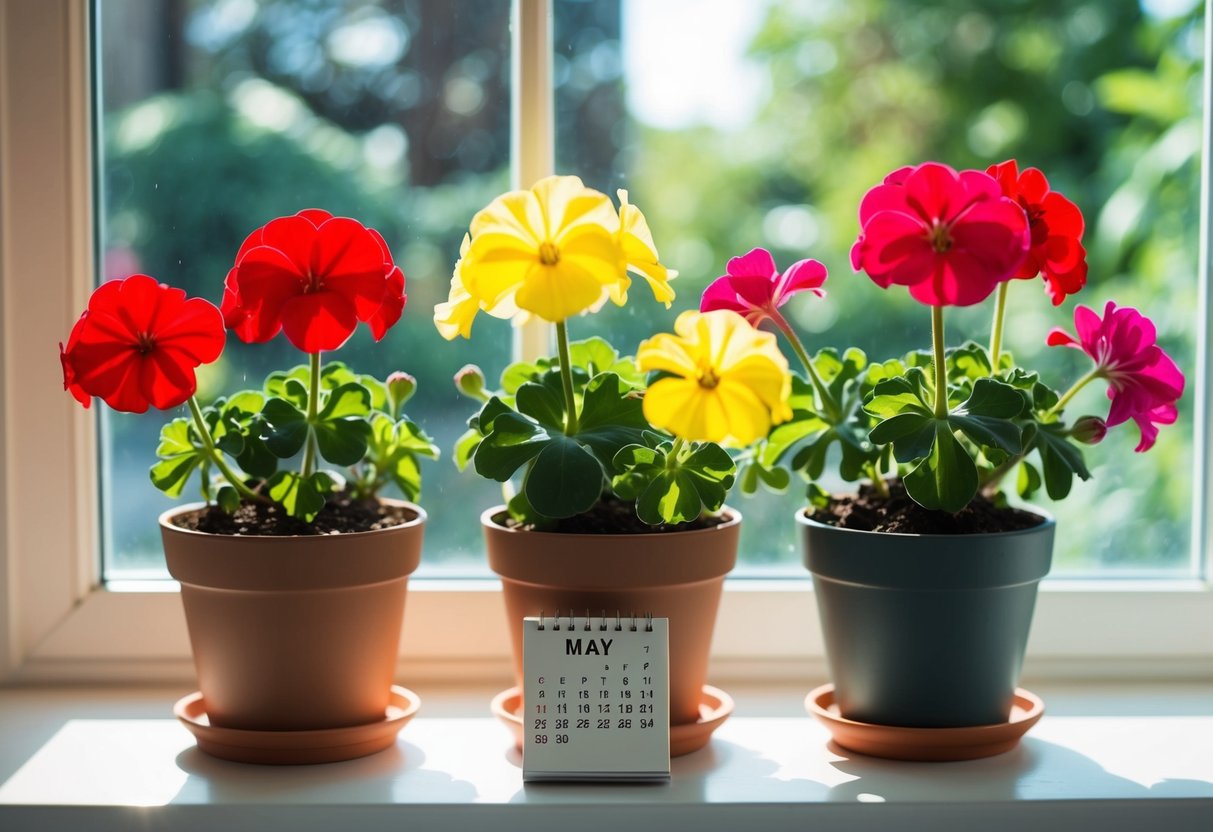
Before you move your geraniums outside, consider the specific conditions of your garden. If you’ve carefully prepared a sunny and sheltered spot, your plants are more likely to flourish.
Geraniums need plenty of sunlight, so choose a good location to help them produce their vibrant blooms.
By understanding when and how to move your geraniums outdoors, you’re setting your garden up for success. It’s exciting to anticipate those colorful blossoms and lush foliage in your garden. With the right timing and care, you can enjoy the beauty that these delightful plants bring to your outdoor space.
Understanding Geranium and Pelargonium Varieties
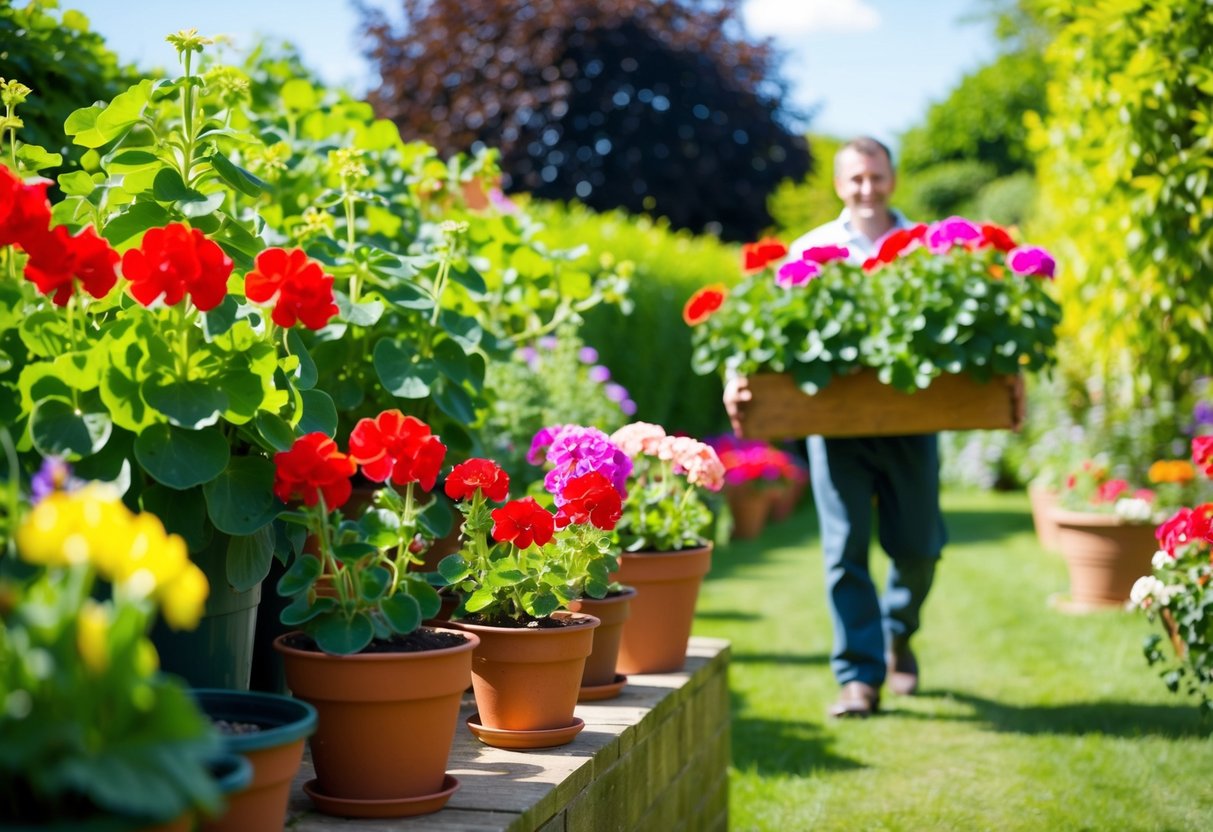
Do you know there are different types of geraniums? These lovely plants often get confused with pelargoniums. Though they share some similarities, they are not the same.
True Geraniums are also called hardy geraniums. These are perennials that can survive colder climates. They are sometimes referred to as cranesbills.
Pelargoniums are mostly grown as annuals in cooler places, but they are actually tender perennials. They include zonal pelargoniums, known for their rounded leaves with dark bands, and regal pelargoniums, which have intricate flowers.
Here’s a quick comparison:
| Type | Zone | Life Cycle |
|---|---|---|
| Hardy Geraniums | Cold-friendly | Perennial |
| Zonal Pelargoniums | Warm zones | Annual/Perennial |
| Regal Pelargoniums | Warm zones | Annual/Perennial |
Do you want colorful blooms all summer? Consider zonal pelargoniums. They thrive in warm weather and love being in full sun. Remember, you can keep them over the winter if you protect them from frost.
When you hear annual geraniums in the UK, it often refers to pelargoniums. They aren’t true geraniums but bring vibrant colors to gardens.
Choosing the right type depends on your climate and garden needs. Whether you prefer perennial geraniums or the showier regal pelargoniums, there’s a perfect choice for every garden.
Optimal Planting Times for Geraniums in the UK
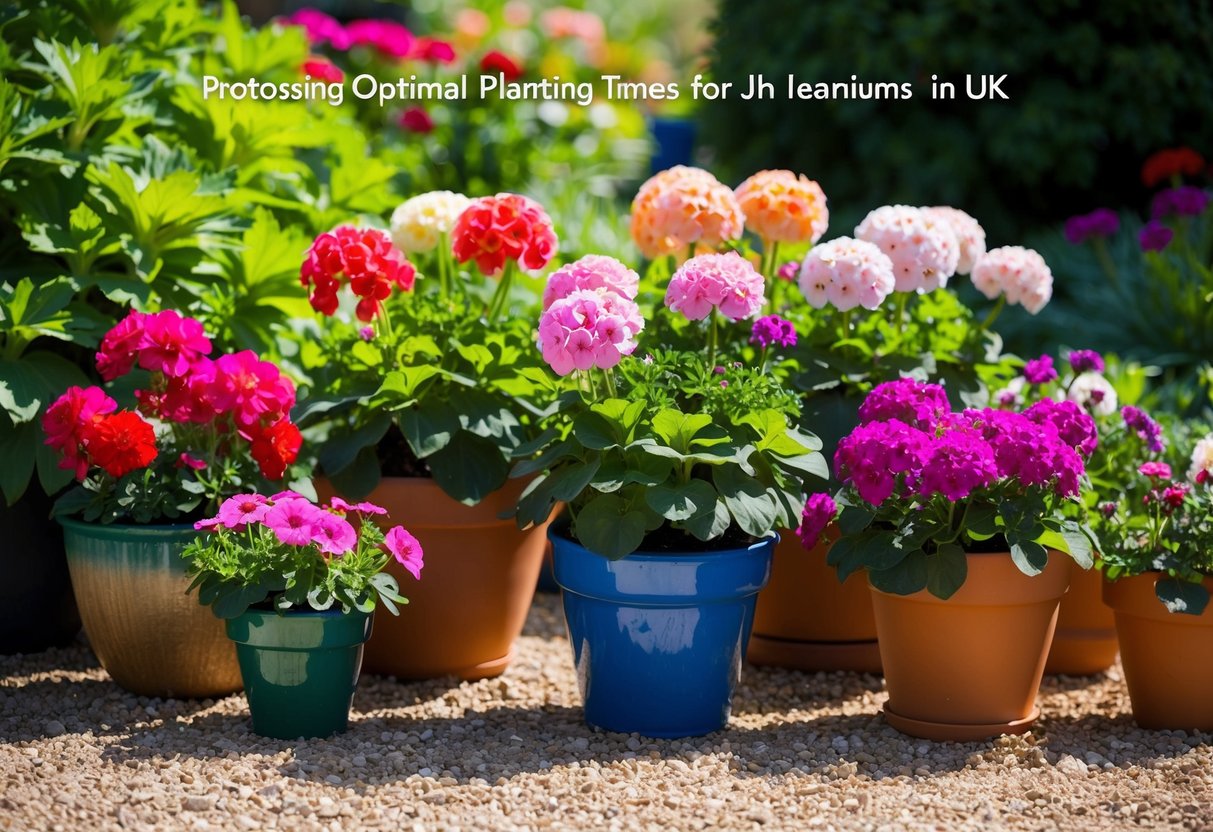
When planting geraniums in the UK, timing is key. You should aim to plant them outdoors once the risk of frost has completely passed. This usually means waiting until late spring, around May.
If you’re overwintering geraniums indoors, consider moving them outside after the last frost. Geraniums prefer mild, frost-free conditions for optimal growth.
In the autumn, you may want to bring your geraniums indoors if you live in a region prone to early frost. This helps them thrive until spring returns.
A good time to plant hardy geraniums in your garden is during the spring or autumn. Early planting ensures they establish well before the cold sets in.
Quick Tips for Planting Geraniums:
- When to plant geraniums: Late spring to early summer
- Growing conditions: Mild temperatures, frost-free
- Overwinter indoors: Protect from frost
Take note of frost dates in your local area to decide the best time for planting geraniums outdoors. You can use a frost map to determine this period.
If you’re planting in pots, make sure to use well-drained soil to encourage healthy growth. Peat-free or loam-based compost works well for geraniums.
In Europe, including the UK, soil conditions and climate can vary. Always adapt your geranium care to local conditions to support vibrant blooms. If you’re interested in more about planting geraniums, you can find information on when to plant geraniums.
Preparing Geraniums for Outdoor Conditions
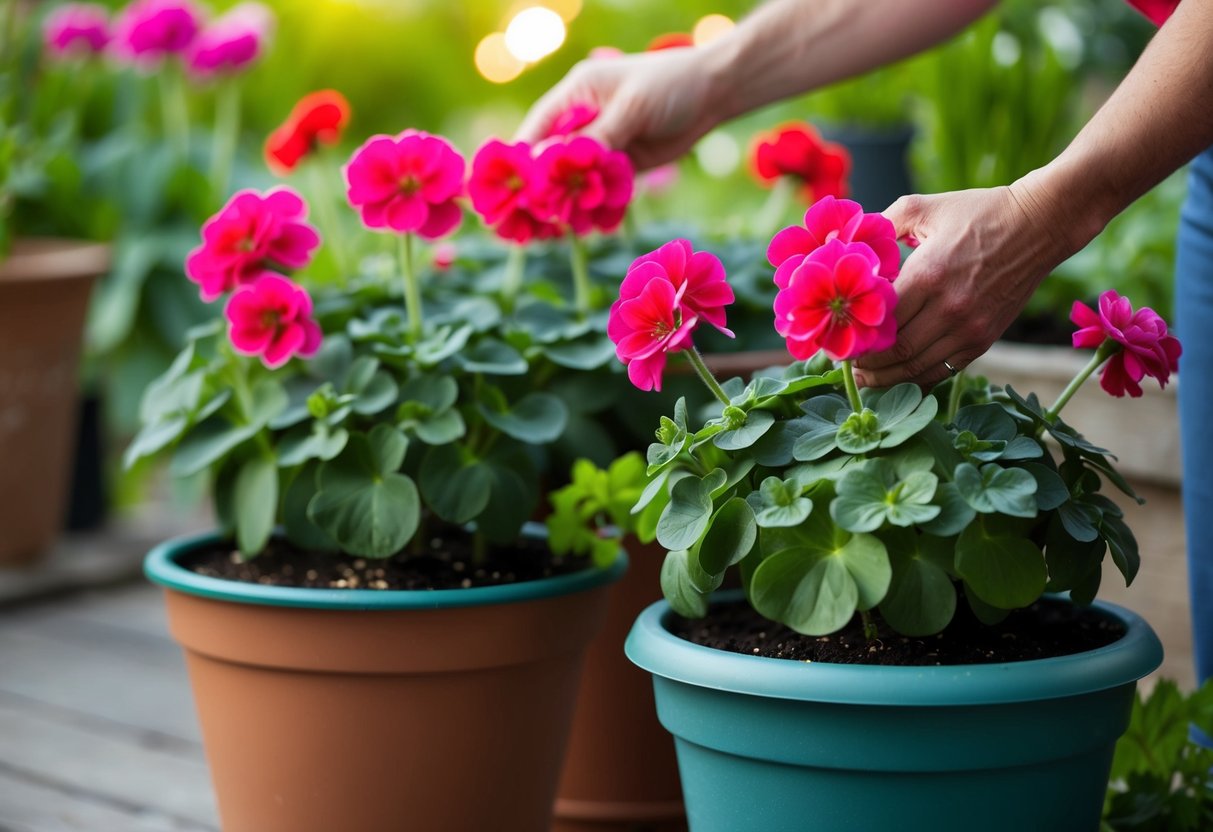
Before taking your geraniums outside, it’s important to harden them off. This helps them adjust to outdoor conditions.
Start by placing them in a sheltered spot, like a conservatory or an unheated greenhouse, for a few hours a day. Gradually increase the time over a week or two.
Make sure your geraniums get used to cold temperatures slowly. Protect them during chilly nights by bringing them back inside if frost is predicted. It’s a gentle way to help them adapt without quite as much shock.
Light is crucial for geraniums. They love the sun, so when you move them outside, ensure they have enough sunlight.
Aim for a location that gets at least six hours of sun daily. Well-drained soil is key, so check that water doesn’t pool where you plant them. Use mulch to retain moisture and protect the roots.
When watering, you need to find a balance. Too little can dry them out, but too much can lead to root rot.
Water when the top inch of soil feels dry to touch, and always ensure proper drainage.
For extra protection, you can use a small greenhouse or cold frame. These provide shelter from unexpected cold snaps while still offering sunlight. This allows your geraniums to transition smoothly to being full-time outdoor plants.
Best Practices for Planting and Maintenance
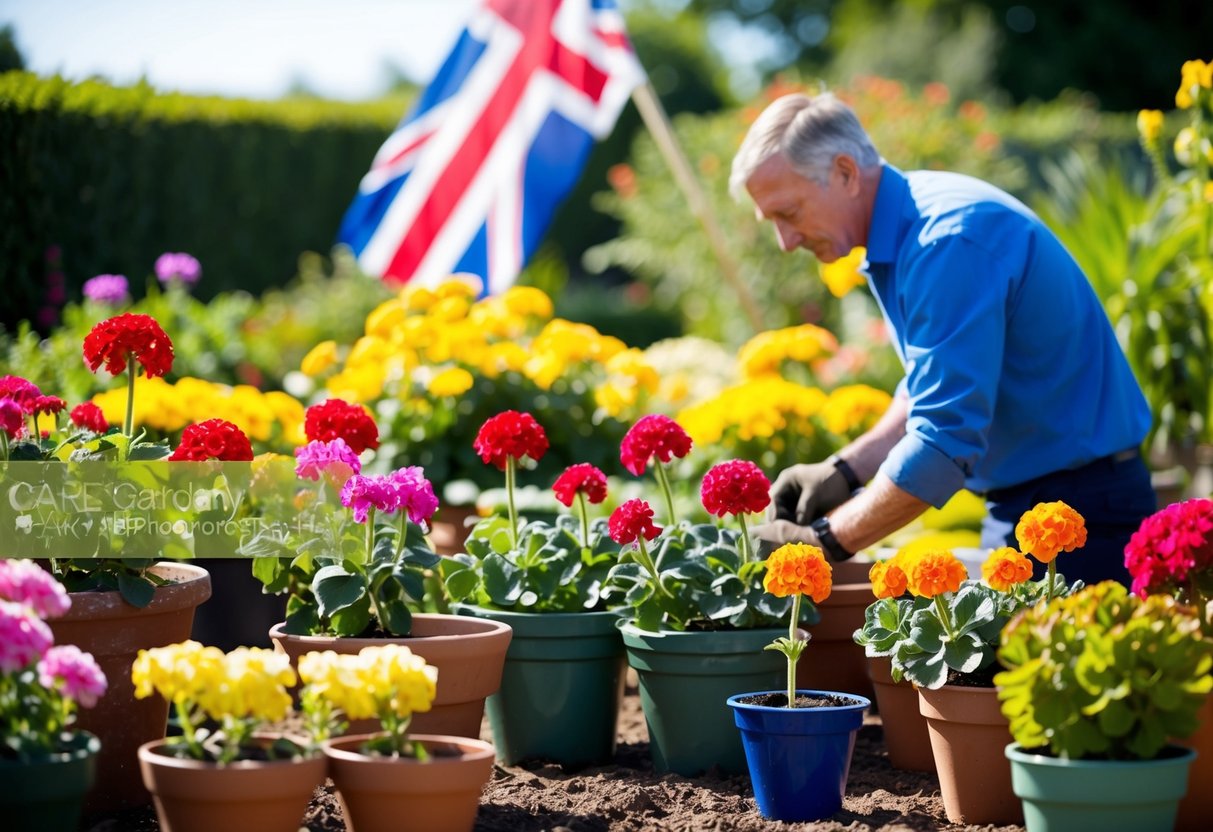
Planting and caring for geraniums well will ensure healthy growth and vibrant blooms. You’ll find tips on picking the best spot, understanding how to water and nourish, and techniques for pruning.
Choosing the Right Location
For the best geranium growth, find a spot with full sun. These plants love sunlight and thrive when they get at least 6-8 hours a day.
You can plant them either in the ground or in containers and hanging baskets. If using pots, choose locations where they won’t be disturbed.
Keep them in a frost-free place to protect them during colder months. Placing them indoors or in a greenhouse during this period can also help. When planting geraniums, place them where they will get lots of attention and sunshine to bring out the best colors.
Soil and Watering Requirements
Geraniums prefer well-draining soil. You might try using a peat-free compost to provide the necessary nutrients. This helps prevent water from pooling, which can damage roots. Make sure your pots and containers have drainage holes.
Water your geraniums 1-2 times per week, depending on weather and pot size. You can reduce watering if it rains or if they’re not in direct sunlight.
Always check the soil moisture before watering; too much water can lead to root rot.
Pruning and Care Tips
Pruning geraniums encourages bushier growth. Pinch back the tips of young plants to promote branching. This step redirects energy for healthier foliage and more blooms.
Regularly remove spent flowers and leaves to keep the plant looking tidy and to foster further blooming.
In late autumn, cut back plants to about half their size to prepare for winter. This helps them to go dormant and protects them against frost. Watching your plants closely helps you notice changes and keep them thriving all year round.
Overwintering Strategies for Geraniums

Keep your geraniums thriving even during the colder months with a few simple strategies. Geraniums, originally from South Africa, need special care to survive winter.
Indoor Storage: Bring potted geraniums indoors before the first frost. Place them in a sunny window where they can continue to grow. Reduce watering and skip fertilizing, allowing them to rest.
Dormancy Method: Allow your geraniums to go dormant over winter. Store the pots in a cool, dark place such as a garage. Water lightly once a month to keep soil from drying completely.
Bare-root Storage: Dig up the plants and gently shake off excess soil. Hang them upside down in a cool, dry space. Rehydrate the roots every few weeks by soaking briefly in water.
Taking Cuttings: Propagate new plants by taking cuttings. Snip 3-4 inch stem pieces from healthy plants. Place them in a pot with moist soil where they will root over winter and grow into strong plants.
Temperature Tips: Keep your geraniums frost-free. Maintain indoor temperatures between 45-50°F (7-10°C) if you choose to store your geraniums dormant.
Humidity Needs: Geraniums need moderate humidity. Aim for around 50% humidity, especially when keeping them growing indoors.
These methods will help you successfully overwinter geraniums, ensuring they bloom beautifully in the spring. For more details, check this guide on how to overwinter geraniums. Use these techniques to enjoy vibrant geraniums year after year!
Dealing With Common Pests and Diseases

When you’re caring for geraniums, you may notice some pests and diseases from time to time. Keeping your plants healthy involves spotting these problems early.
- Aphids can cluster on leaves, sucking the sap.
- Spider mites create tiny webs.
- Whiteflies hover around your plants.
A mild insecticidal soap can help control these pests.
Diseases:
- Fungal infections are often a concern. If you see grey mold on leaves, it’s likely a sign.
- Brown patches can appear on zonal geraniums. Watch out for Pseudomonas Leaf Spot on leaves.
To manage fungal issues, keep plants in well-ventilated areas. Avoid wetting leaves when you water.
Tips for Healthier Plants:
- Make sure your geraniums are in well-draining soil to prevent root rot.
- Cranesbills, another name for hardy geraniums, can also be affected but are typically tougher.
Maintaining Flower Beds:
Cleaning up fallen leaves and debris from your flower beds can reduce pest homes. Healthy plants are less likely to be attacked by pests and diseases. Regular checking is key.







